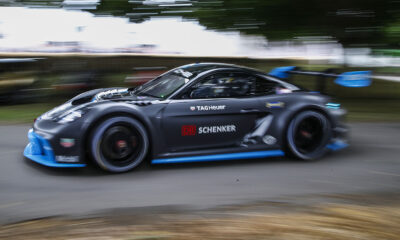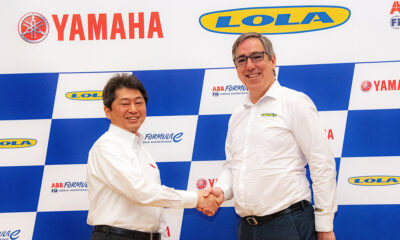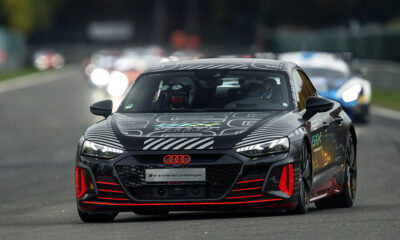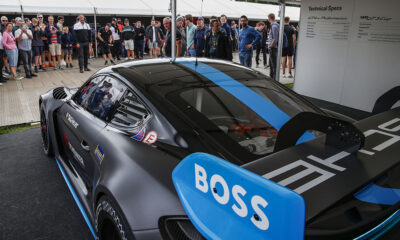
Photo: ETCR
ETCR cars will use spec powertrains supplied by the series organizers with manufacturers using their own car designs and chassis, it has been confirmed.
WSC Technology will supply a common kit including motors, inverter, battery, ECU and cooling system, according to CEO Mauricio Slaviero Campos.
The series was officially launched at Circuit de Barcelona-Catalunya on Sunday along with the first public demo laps of the Cupra e-Racer, currently the only car built to the series’ regulations.
“[The powertrain] will be supplied from WSC to the manufacturers,” Slaviero Campos told e-racing365. “It’s going to be an ETCR electric kit.
“Everything but the powertrain, battery and cooling system is from [manufacturers].
“The full car, it’s completely different cars, different chassis, different designs and everything, different suspension as well. All this is totally free for them.”
The format is effectively the reverse of the ABB FIA Formula E Championship, in which manufacturers develop their own powertrains to fit in a spec chassis.
He explained that the plan is to open up some of the restrictions to manufacturers at a later date, allowing brands to produce their own powertrain parts.
“The idea, is after three years, to start to open some of the parts of the kits to the manufacturers for their own development,” he said.
The powertrain used in the Cupra e-Racer was a joint project between WSC and SEAT subsidiary Cupra, with the Spanish brand having been part of the ETCR platform since its launch.
Croatian electric hypercar manufacturer Rimac is also involved in the development, having formed a technical partnership with Cupra.
The car has two electric motors on the rear axle, producing 500 kW (680 bhp).
It weighs 400 kg more than the standard Cupra TCR but is more powerful and accelerates 0-62 mph in 3.2 seconds.
“It’s something that we worked together to develop, it’s a joint development,” Slaviero Campos said.
“There’s been a lot of support and effort from [Cupra]. Their technical department is doing a lot of work on all of the development.”
Manufacturers Could Convert Existing TCR Cars for ETCR
Slaviero Campos says he expects manufacturers to use different cars for ETCR than its TCR programs, in order to fit in with each brand’s road car EV marketing strategy.
However, modifications could be made in order to convert a gasoline-powered TCR car to ETCR specifications.
“They could use the same base,” he said. “There are some modifications that they need to do, not only on the combustion side but the chassis as well.
“The battery is on the floor so you have to have a lot of support on the floor, different support to you have in a regular car, to sustain the battery.
“There are a few different things but I would say that most of the manufacturers are going to use different cars, more connected to the cars that they want to have on the road in the future for electric cars.
“If a manufacturer wanted to take a regular TCR car and change it for ETCR, they can, with some adaptations.”
Additional manufacturers are set to confirm programs within the next month, while Slaviero Campos expects between four and six brands to commit to the series.

























